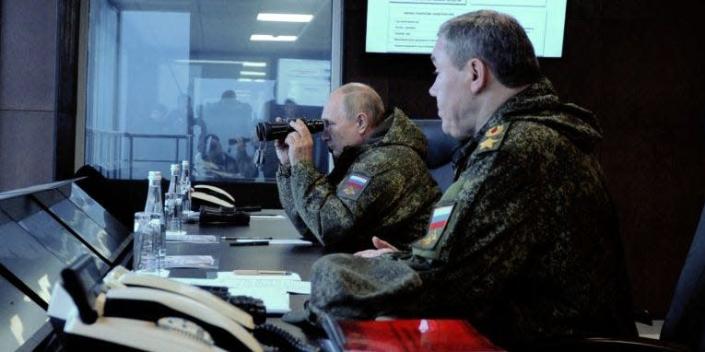
-
Putin’s announced Wednesday plans to draft up to 300,000 reservists to beef up the Kremlin’s forces in Ukraine.
-
Partial military mobilization won’t have any effect on the war for months, a think tank said.
-
There may be more immediate effects from stop-loss policies though, other experts have noted.
Russian President Vladimir Putin’s plans to partially mobilize hundreds of thousands of reservists to beef up the Kremlin’s forces in his fight with Ukraine likely won’t have any effect on the conflict for months, war and conflict researchers said.
Putin’s announcement in a televised address to the nation on Wednesday that mobilization would begin immediately came as Russia continues to suffer defeats on the battlefield, exacerbating losses in a war that has taken a heavy toll on Russian forces over the past seven months.
The Institute for the Study of War, a Washington, DC-based think tank, said in an assessment published on Wednesday that Putin’s announcement “reflected many problems Russia faces in its faltering invasion of Ukraine that Moscow is unlikely to be able to resolve in the coming months.”
Putin’s order to call up to 300,000 reservist troops to wage war in Ukraine “will not generate significant usable Russian combat power for months,” the think tank said.
Russian stop-loss policies, such as indefinite extensions of soldier service contracts and the end of a soldier’s ability to refuse deployment, might have a more significant impact though, as CNA Russia expert Michael Kofman notes. These measures would allow Russia’s military to keep experienced troops in place as Russia faces counterattacks on multiple fronts.
The US Department of Defense has estimated that as many as 80,000 Russian troops have been killed or wounded since the beginning of the war in February. As that figure came from an early August update, the casualty count could be even higher.
Putin’s mobilization order, ISW said, “may suffice to sustain the current levels of Russian military manpower in 2023 by offsetting Russian casualties, although even that is not yet clear.”
The Russian’s leader’s order for more troops will not “deprive Ukraine of the opportunity to liberate more of its occupied territory into and through the winter,” the think tank said.
Russia is expected to “struggle” to find 300,000 troops, the UK’s Ministry of Defense said in a daily intelligence update on Thursday, adding that if it does, Moscow “will probably attempt to stand up new formations with many of these troops, which are unlikely to be combat effective for months.”
John Hardie, an expert on Russian foreign and security policy at the Foundation for Defense of Democracies, echoed those sentiments.
“The 300,000 figure [of reservist troops] strikes me as unrealistic,” Hardie said in a statement shared with Insider, further arguing that all of the troops “will need to receive refresher training and be organized and equipped, which takes time.”
In Russia, men between the ages of 18 and 27 are required to do one year of mandatory military service, but it is unclear whether the training is sufficient.
“Russia is not a mass-mobilization military like the Soviet one; it’s not built to quickly intake a large number of mobilized personnel,” Hardie said, explaining that many of the professionals who would train the incoming recruits are already fighting in the war.
Additionally, Hardie explained, Putin’s call for a mobilization of troops “carries serious political risks and was not made lightly.”
“Throughout the war, he had assiduously avoided going this route, opting instead for a variety of piecemeal measures to try to address Russia’s growing manpower issue,” the expert said, adding, “It appears he now realizes that approach was no longer tenable.”
In the wake of Putin’s mobilization announcement, many Russians attempted to flee the country while others took to the streets in cities across the country to protest the war.
Hundreds of demonstrators were detained by local police, who could be seen in photos and videos making aggressive and violent arrests.
The scenes were reminiscent of protests from late February, where Russian civilians rallied en masse against Putin’s full-scale invasion of Ukraine.
Read the original article on Business Insider




